

EatJoy is a mobile application that helps emotional eaters to make better food choices, control eating time and amount and track their behavior change overtime, by applying behavior change techniques.

UX Research & Design, UI Design, Consumer Health Technology
September 2018 - January 2019
Team: Qing Guo, Puhe Liang
Tools: Sketch, InVision, Adobe Animate CC
Eating is the daily activity for human beings. But emotional eating is when you eat to satisfy emotional hunger instead of physical hunger.

Studies have shown emotional eating is a risk factor of obesity, [1] and the relation seems even stronger among adolescent [2]. 40% people report they eat more when they are stressed, and the food they seek for is usually comfort food with high sodium or calories, such as ice cream, pizza [3].
The causes of emotional eating [4] [5] can be categorized into two:

The existing coping strategies include :

We received 111 survey results and interviewed 7 students who have experienced emotional eating from the University of Michigan (UM) community.
Several key insights from the survey and research:
Possible solutions are mentioned in the research:
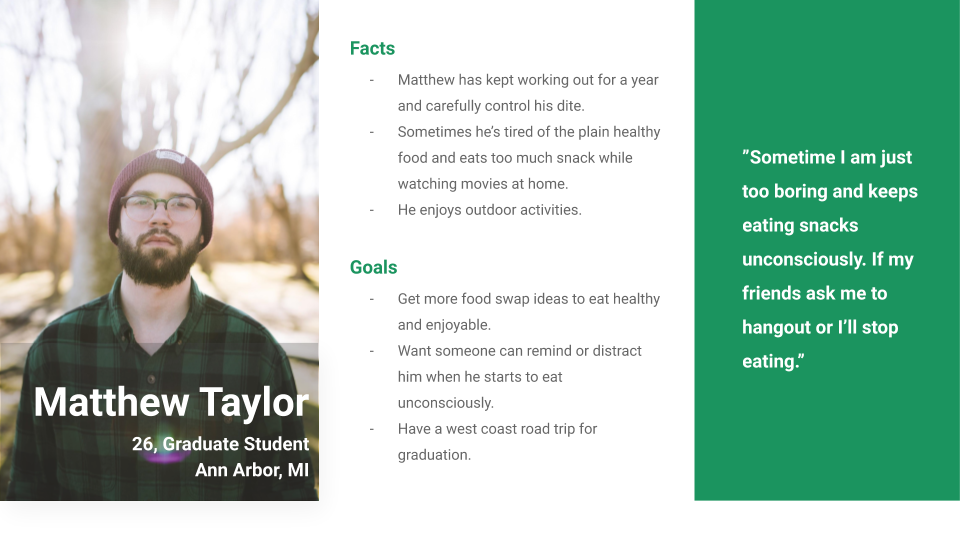
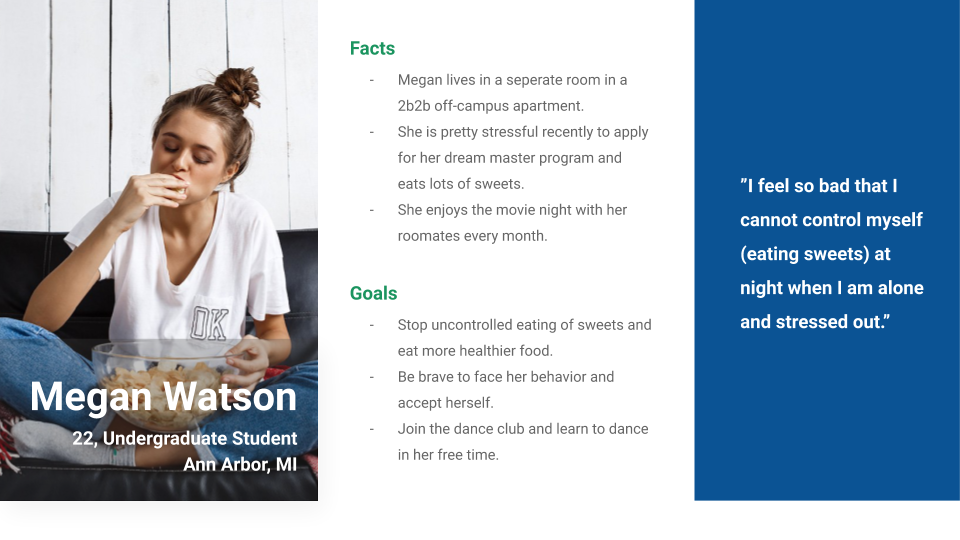

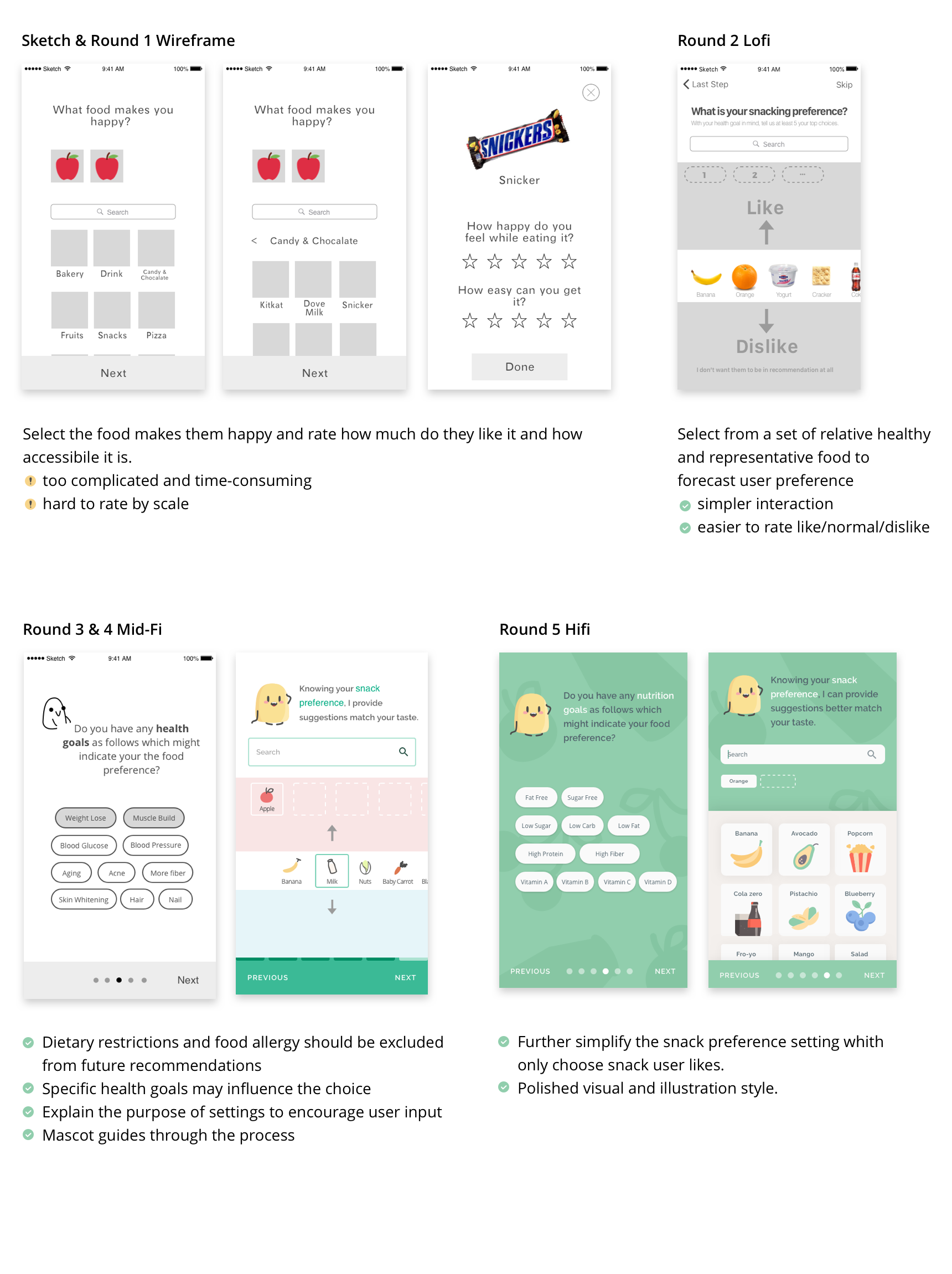
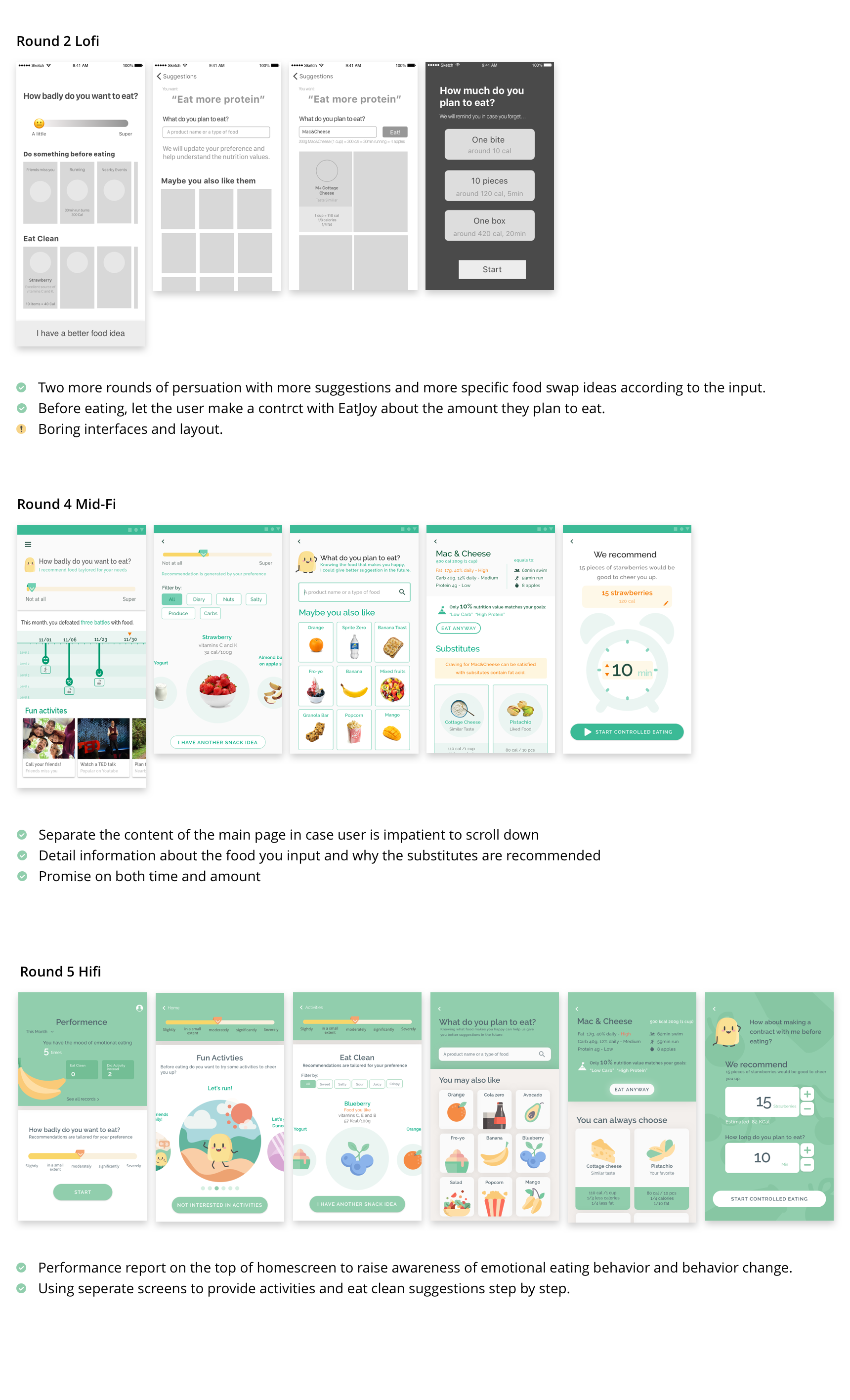

Self-monitoring is a technique records one's own activities, thoughts and feelings. It's an effective way to tracking users' eating patterns, and raise their self-awareness like how frequently this happens, what's the amount and time they eat each time, and how their behavior change overtime and finally eliminate the monitored behavior, in this case the emotional eating behavior.

Social support can facilitate the health behavior change and the management of chronic conditions. In this case, social support can be both intentional or unintentional. Talking with friends and families about this situation and letting them monitor the behavior control. Or eliminating the craving for food through social interactions.

Studies showed craving for a specific food may indicate mineral deficiency, and there are lots of food swap ideas which can meet eaters' needs. But this harm reduction method is only a temporary solution for emotional eating, since it does not stops the emotional eating but only using healthier food to reduce the harmful results on health.
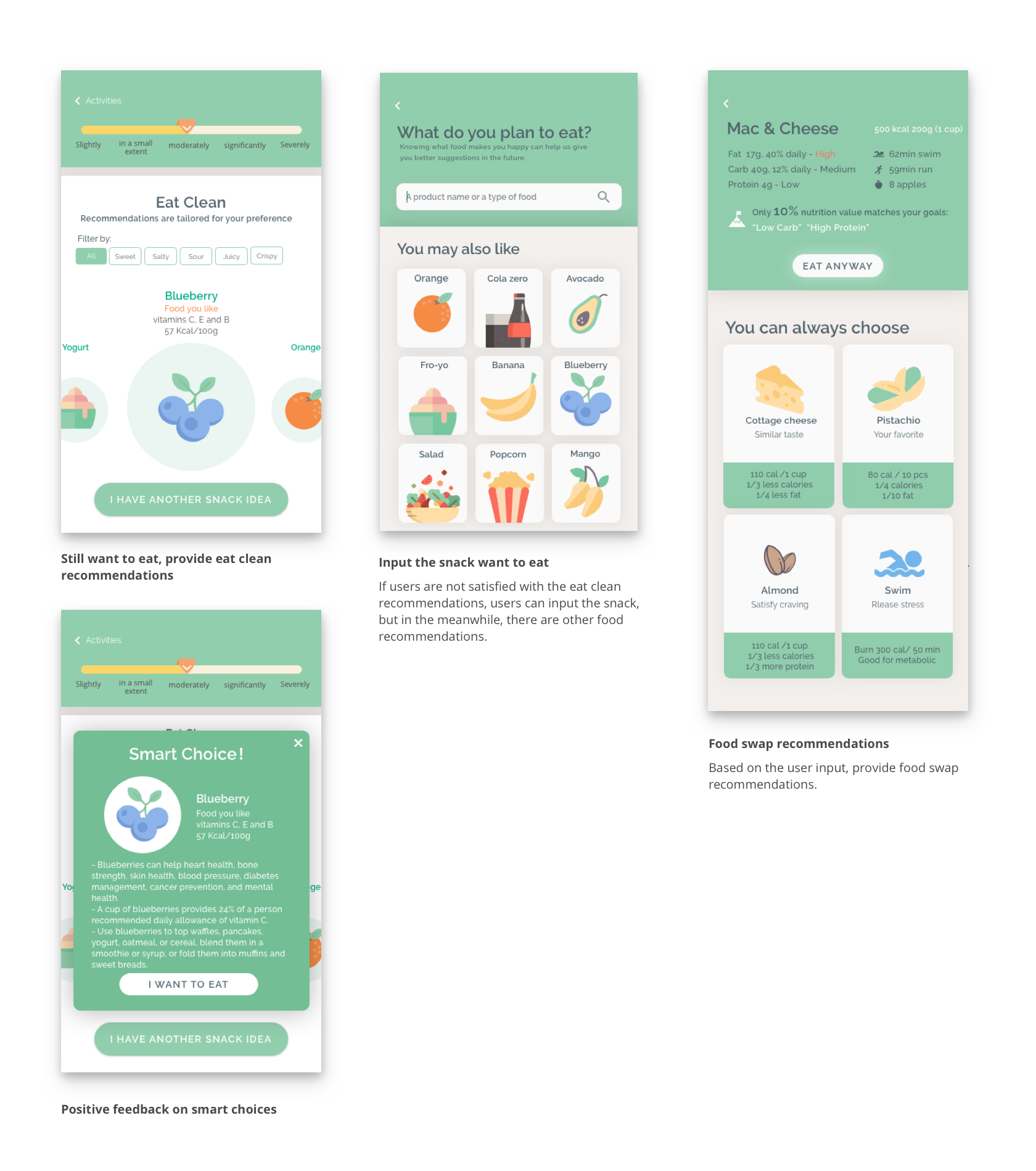
Goals improve performance. With a specific goal of the amount and time of eating will facilitate the fulfillment of emotional eating control. And a positive feedback is provided to encourage the behavior with a simple self-reflection to help improve self-regulation ans build up a long term habit.
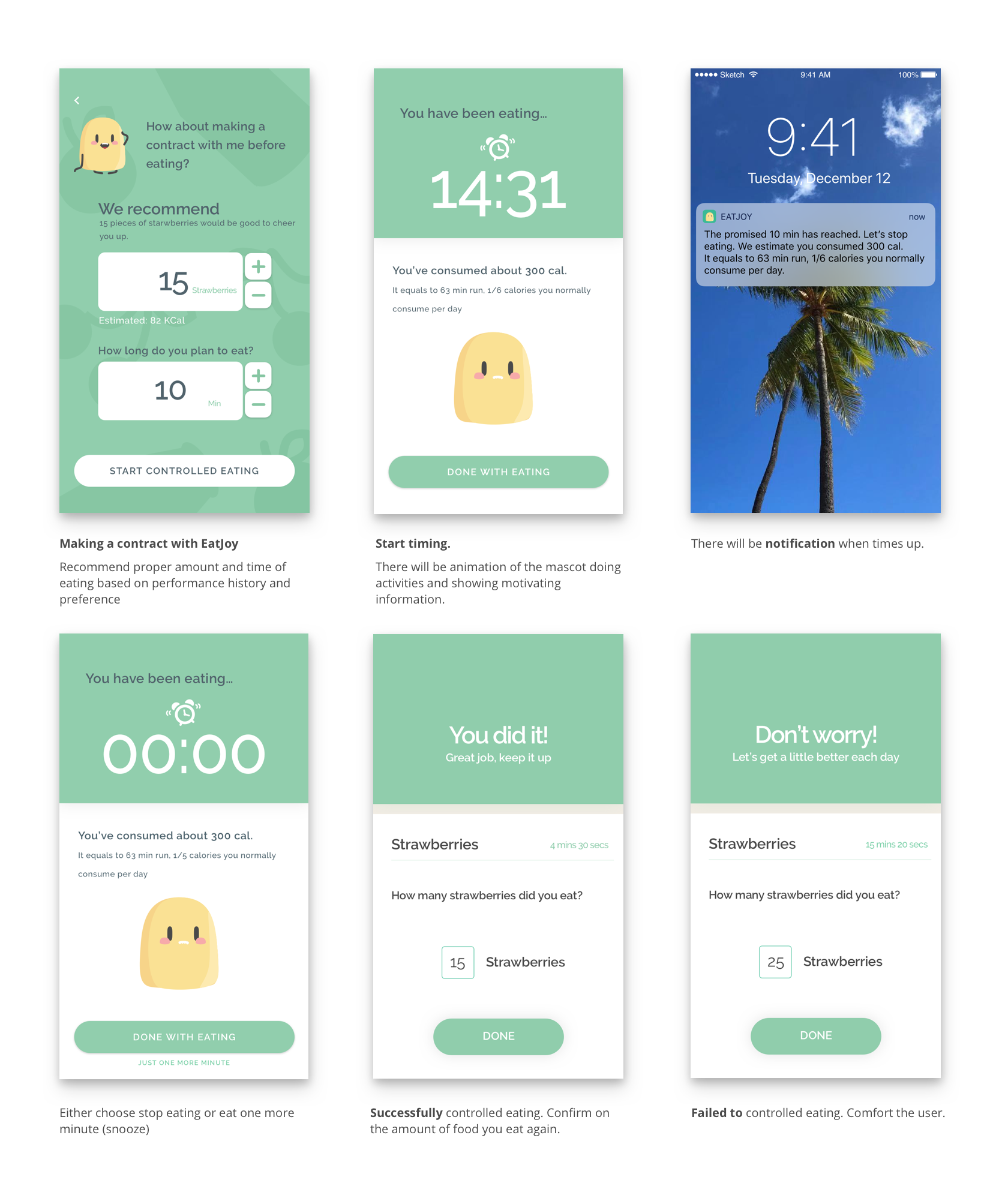

Uncontrolled emotional eating can have a long term impact on people. By manually setting alarm, stocking more healthier food at home, and marking the times I had emotional eating on the calendar the solution sometimes worked for me and sometimes failed. Similarly, for people who have suffered from it, the behavior can be hard to change. A long term test can better understand how user uses the APP when experiencing emotional eating, and how user's behavior change overtime.
The food being stored at home and those do not need extra preparation are more likely to be chose. We considered let users to rate how accessible the food is during onboarding. But this greatly increases the complexity of onboarding and user setting. After a round of user evaluation, we removed this for now. But other more intelligent mechanisms should be involved in the solution to make sure the food we recommended is accessible for users. For example, combing with grocery shopping experience to remind users to buy healthier food.